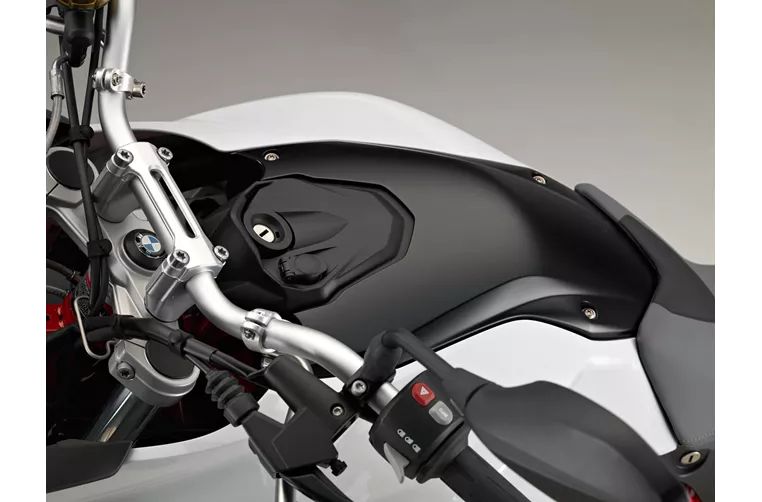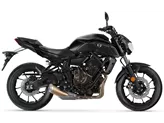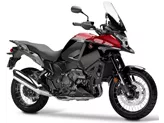BMW F 700 GS 2016 vs. Honda NC750X 2016

BMW F 700 GS 2016

Honda NC750X 2016
Overview - BMW F 700 GS 2016 vs Honda NC750X 2016
The BMW F 700 GS 2016 and the Honda NC750X 2016 are both enduro motorcycles that offer a combination of on-road and off-road capabilities. While they have some similarities in terms of their engine and drive train specifications, they also have distinct differences that set them apart.
In terms of engine power, the BMW F 700 GS 2016 comes out on top with 75 HP compared to the Honda NC750X 2016's 55 HP. This makes the BMW more powerful and potentially more suitable for off-road adventures. Additionally, the BMW has a higher torque of 77 Nm compared to the Honda's 68 Nm, which can provide better acceleration and pulling power.
Both motorcycles have a chain transmission and are equipped with a 2-cylinder engine. However, the BMW has a larger displacement of 798 ccm compared to the Honda's 745 ccm. This means that the BMW may offer more overall performance and a smoother ride.

BMW F 700 GS 2016
In terms of chassis, both motorcycles have a steel frame. However, the BMW F 700 GS 2016 has a tubular, load-bearing engine frame type, which can provide additional stability and strength. On the other hand, the Honda NC750X 2016 has a twin tube, tubular frame type, which may offer a different riding experience.
When it comes to dimensions and weights, the BMW F 700 GS 2016 has a slightly longer wheelbase of 1562 mm compared to the Honda NC750X 2016's 1540 mm. This may contribute to better stability and handling for the BMW. The seat height of the BMW is also slightly lower at 820 mm compared to the Honda's 830 mm, which may make it more accessible for riders with shorter legs.
In terms of weight, the Honda NC750X 2016 is slightly heavier with a kerb weight of 219 kg compared to the BMW F 700 GS 2016's 209 kg. This may affect maneuverability and agility, with the BMW potentially being easier to handle.
Both motorcycles have good braking systems, which is an important factor for safety. The BMW F 700 GS 2016 also offers a comfortable seating position, which can contribute to a more enjoyable and less fatiguing ride. Additionally, the BMW has a larger fuel tank capacity of 16 l compared to the Honda's 14.1 l, which may provide a longer range between refueling stops.

Honda NC750X 2016
In terms of strengths, both motorcycles are described as very manageable, which can be beneficial for riders of various skill levels. The BMW F 700 GS 2016 is praised for its surprising power, comfortable seating position, low seat height, good brakes, and good price. On the other hand, the Honda NC750X 2016 is commended for its affordability, low fuel consumption, DCT dual-clutch transmission, adjustable driving modes, and good brakes.
As for weaknesses, the BMW F 700 GS 2016 is noted for its optics, although no specific details are provided. The Honda NC750X 2016 is criticized for its weak engine and early onset of the rev limiter, which may limit its performance capabilities.
In conclusion, the BMW F 700 GS 2016 and the Honda NC750X 2016 are both capable enduro motorcycles with their own strengths and weaknesses. The BMW offers more power and potentially better off-road capabilities, while the Honda excels in terms of affordability and fuel efficiency. Ultimately, the choice between the two will depend on the rider's specific needs and preferences.
Technical Specifications BMW F 700 GS 2016 compared to Honda NC750X 2016
Pros and Cons in comparison
Pros and Cons in comparison
BMW F 700 GS 2016

The smaller of the two F GS sisters, the F 700 GS convinces with a successful overall performance. It looks like its big sister, but at its core it is more of a lively naked bike than a big enduro. The fact that the bike has outgrown the entry-level segment can be seen in the braking system - with two brake discs at the front, it is on a par with its big 800 sister and now decelerates just as confidently. In terms of the chassis, it convinces with good suspension comfort and at the same time a firm set-up in tight bends. Upgrading is never a problem with BMW; in addition to traction control, there is also the electronic suspension ESA for the F 700 GS.
Honda NC750X 2016

With its DCT (Dual Clutch Transmission), the NC750X is the most coherent model in the NC range. With its windshield, long suspension travel and the resulting increase in comfort, it is also suitable for longer distances and even travelling. After all, why shouldn't beginners also be able to enjoy comfortable yet uncomplicated travel? Above all, the comparatively low centre of gravity takes away the fear of the visually much larger and more bulky NC750X, even for inexperienced riders. The engine is not too sporty, but the DCT, which changes gears extremely precisely and easily at the touch of a button or even fully automatically, quickly makes you forget that. The helmet compartment under the dummy tank is particularly ingenious.
Price Comparison Avarage Market Price BMW F 700 GS vs Honda NC750X
There are a few key differences between a BMW F 700 GS 2016 and a Honda NC750X 2016. There are the same number of bikes of both models available on the 1000PS.de marketplace, specifically 15. It takes less time to sell a Honda NC750X with 77 days compared to 90 days for the BMW F 700 GS. Since model year 2013 1000PS.de editors have written 7 reviews for the BMW F 700 GS and 23 reviews for the Honda NC750X since model year 2014. The first review for the BMW F 700 GS was published on 7/2/2012 and now has more than 18,800 views. This compares to more than 8,800 views for the first review on Honda NC750X published on 11/3/2013.






















